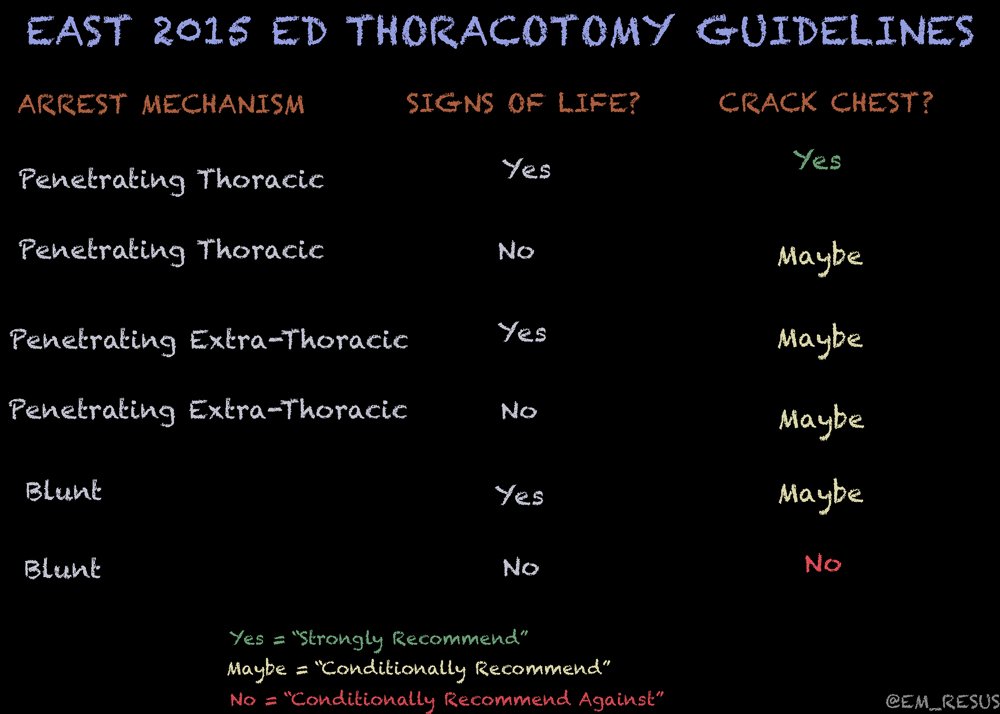EDT is resource intensive and frequently futile. There is controversy regarding the procedure, with varying guidelines and reported survival rates.
Signs of life - pulse, bp, spontaneous respirations, reactive pupils, extremity movement, cardiac electrical activity
EAST guidelines for EDT
-
Strong recommendation if pulseless w/ signs of life after penetrating thoracic trauma
-
Conditional recommendation if
- Pulseless w/o signs of life after penetrating thoracic trauma
- Present OR absent signs of life after penetrating extrathoracic trauma
- Present signs of life after blunt trauma
3. Recommendation against if absent signs of life after blunt trauma

Exam world answers
- penetrating trauma w/ witnessed prehospital or ED arrest
- penetrating trauma w/ SBP <70 after fluid resuscitation
- blunt trauma w/ ED arrest

Why are you doing EDT?
1 - Cardiac tamponade release
2 - Cardiac massage
3 - Intrathoracic/cardiac hemorrhage control
4 - Cross-clamping descending aorta (optimize cerebral/coronary perfusion)
5 - Control air embolism
Sources
Wiki EM
EM updates
Medscape
LIFTL
